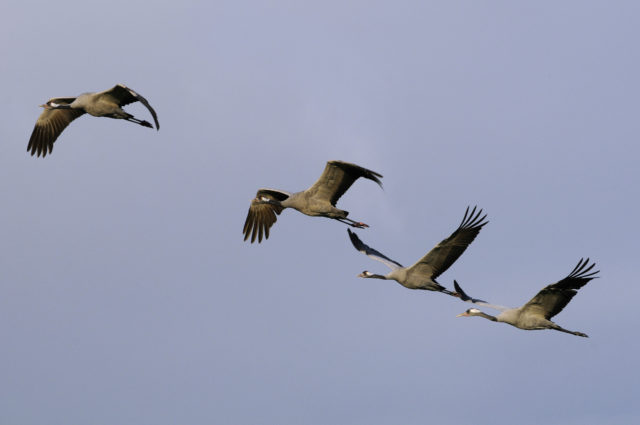This year has been the most successful year for common cranes in the UK since the 17th century, conservationists have said.
The latest survey of the UK’s tallest bird indicated it continued to make a comeback in the country, with a record 54 pairs producing 25 chicks and bringing the national total population to around 180 birds, the RSPB said.
The birds, which stand 120cm (4ft) tall, were once widespread in this country before they became extinct in the 17th century as a result of hunting and the loss of the wetlands in which they make their home.

And in 2010 the “great crane project” by the RSPB, Wildfowl and Wetlands Trust (WWT) and Pensthorpe Conservation Trust started working to create and improve existing habitat and hand-rearing birds for release on the Somerset Levels and Moors to help boost the UK’s population.
Wild cranes are now breeding in the Norfolk Broads, East Anglian Fens, Yorkshire and east Scotland as well as in south-west England, the conservationists said.

“To see them starting to spread back across the country after all this time is just brilliant – and a true reflection of how important the UK’s wetland habitats are to cranes as well as the many other species they support.”
Andrew Stanbury, RSPB conservation scientist, said: “This success story highlights the importance of the UK’s protected sites and nature reserves.”
He said these places offered the seclusion needed for cranes to breed successfully and called for better protection of existing sites, and for new areas to be created and maintained to ensure the crane’s expansion continues.






